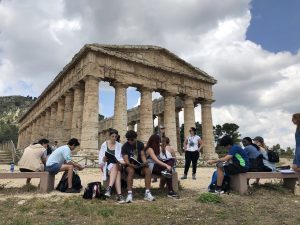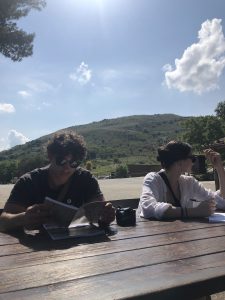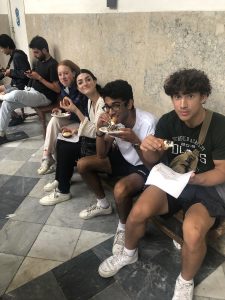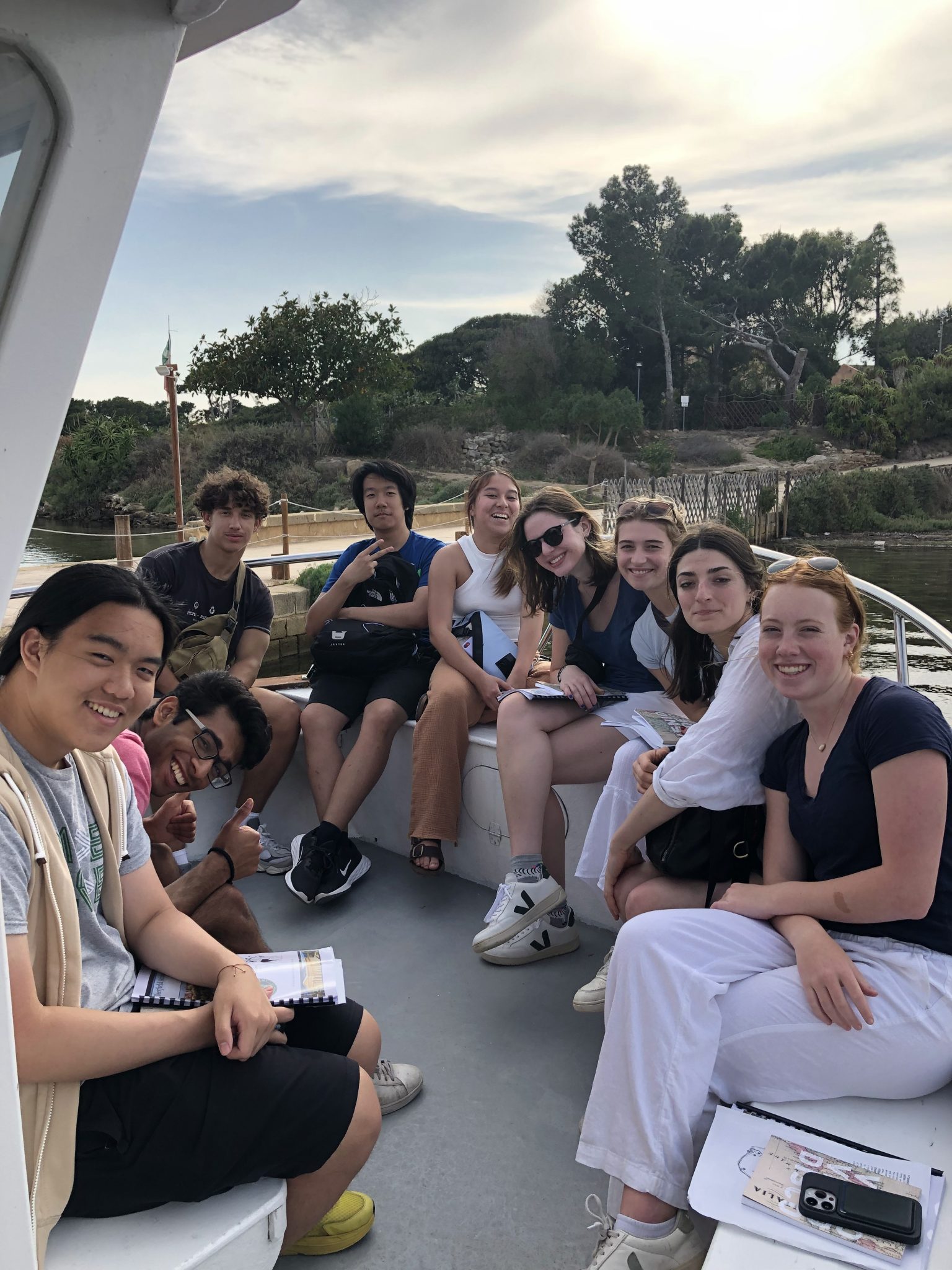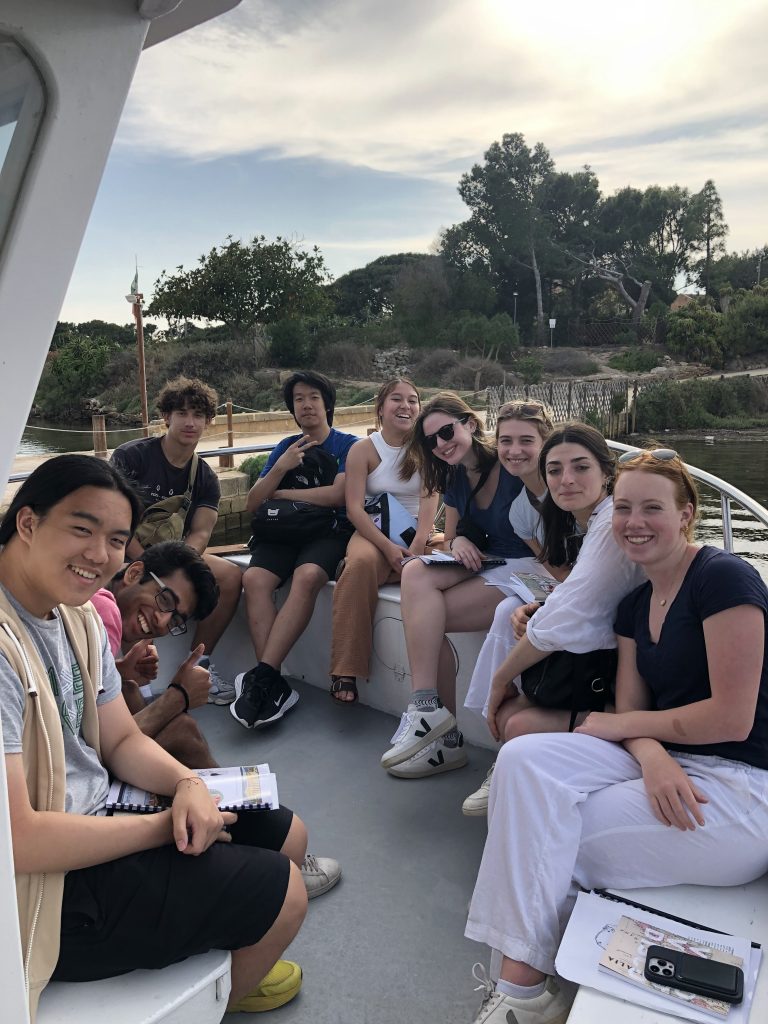Xavier ’24, reflects on the structural similarities between Greek and Italian monuments as the group begins their journey in Sicily.
My quite exciting dream was interrupted by the smack of a pillow against my head. It was a consensual, light smack as I needed to wake up at 6:20 in the morning to be able to go through my meticulously planned morning routine. As I went about my incredibly significant routine, thoughts concerning J. Cole’s new album and making sure I take, what one may say, “drippy” pictures, owned space in my mind. It had never occurred to me that just hours later, my head would be flooded with ideas surrounding the abundance of Greek influence within the regions we visited today, or how slang is utilized in Italy. I remember Dr. Houston saying early on during one of our introductory meetings, that he would’ve loved to plan a Greek culture and language trip but couldn’t due to the immense amount of material and history that had to be covered if that trip were to happen. However, upon observing the magnificent statues, monuments, and temple, we were able to receive a sample of what the Greece trip would’ve looked like due the various similarities Italian structural items and Greek structural items share. The items that will be mentioned are so similar to the works of the Greeks, they might even be the same! For example, when we visited the Temple of Venus in Segesta, the archaeologist who so kindly guided us along in our learning process suggested that the temple was a Greek temple, but was built in Sicily!
After we had visited the temple, we ventured to the coast, whereupon I most graciously enjoyed the finest piece of swordfish I had ever had (it was only my third time in two days of eating it). As the swordfish gradually went through the process of digestion within my body, my eyes could not help but veer off into the water, where I could make out the island we were supposed to be going to next. I had the greatest opportunity to sit next to our rather eloquent and knowledgeable trip leader, Claire. Claire and I spoke about various things until the conversation of slang was brought up. Throughout the conversation, my raga and I discovered that Italians have a wide selection of slang words like we do!
To succeed in being at least a somewhat cohesive entry, Claire, our instrumental group leader, among the fearless Dr. Houston, benevolent Ms. Delwiche, and witty Raffaela, stated that the statue of a charioteer (as many believe it to be) may have been looted from the Greeks by those who ended up with it in possession. This charioteer was one of the thousands of items we curiously gazed at whilst within the walls of the Giuseppe Whitaker Museum on the island we had eventually ventured to. These two examples display the pronounced want by the Italians to replicate the artisanal quality they are most commonly known for. However, this is not meant to be a negative thing. If anything, this demonstrates the many talents Italians possessed to be able to replicate, or plunder, such delicate and complex works of architecture and structural items from other regions to inspire an advancement in well-being.
